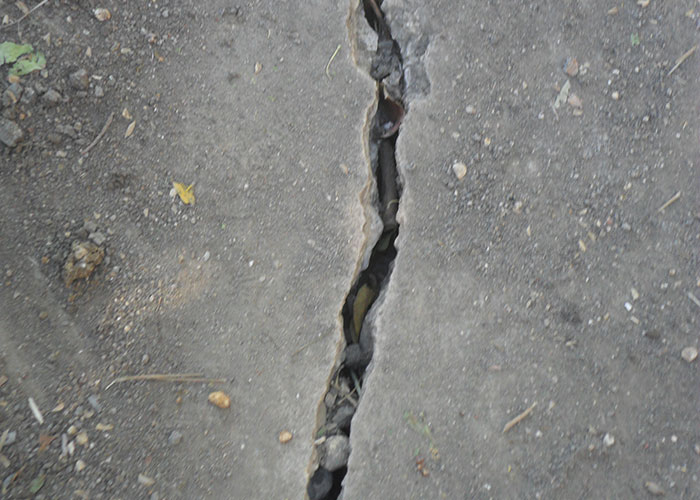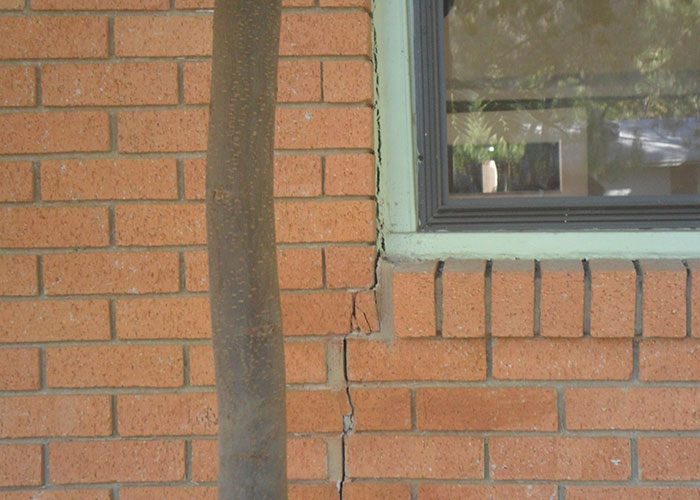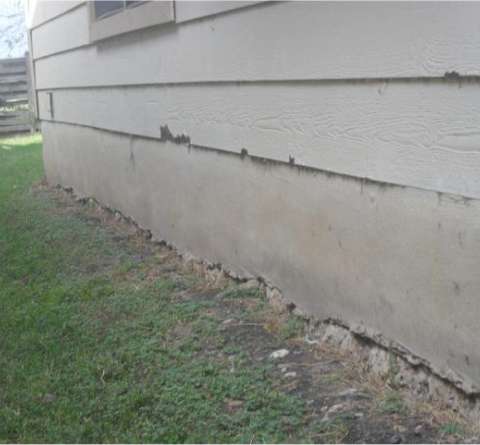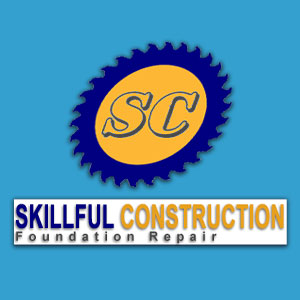What Is the Best Way to Repair a Concrete Slab?
Your house’s foundation is the most important part of your house. Foundation repair is critical if you have issues because of the importance of it’s structural stability and insulation, while also keeping out bugs and other unwanted pests. A foundation in disrepair often results in interior wall and floor cracks as well as damaged plumbing, water leaks, and a number of other costly issues.
The best concrete slab foundation repair methods include:
Steel piers or beams
Helical piers, similar to corkscrews
High-density polyurethane foam or foam jacking
Note that there are other concrete slab foundation repair methods available, and your foundation repair contractor might note which is best for your home’s needs and your budget! House leveling and various underpinning methods also help strengthen a foundation and correct severe damage.

Before you let your home’s foundation repairs get more extensive and costlier to fix, consider some signs of foundation damage as well as added details about various foundation repair methods. You can then discuss your choices with a foundation repair expert as needed and ensure your home is in good condition and safe for occupancy!
Understanding Various Concrete Slab Foundation Repair Methods
While it might take years to learn all the various details of concrete slab foundation repair methods, you might consider some important information about these repair methods and those they’re implemented. You can then better discuss your choices with a repair expert and know what to expect by way of costs, repair time, and the like.
Steel piers or beams, sometimes called push cylinders, can be installed along the home’s exterior, outside the foundation edges. These beams are inserted deep into the ground and help to compact soil under the home while also adding strength to the foundation and pushing it back into place, correcting many cracks and chips.
As steel beams are solid and durable, they’re typically preferred for correcting major foundation damage and serious repairs.
Helical piers are similar to steel piers but are shaped like a corkscrew. These screw into the ground rather than being pushed into place.
Helical piers are typically used for lightweight structures including porches and small homes with vinyl siding, as these piers don’t provide as much strength and support as steel.
Concrete piers are sometimes used in a fashion similar to steel or helical piers. However, these have fallen out of favor as they typically require lots of earth removal for concrete pouring, and it can be difficult to bring a concrete mixer onto residential property.
Note, too, that concrete is not as solid and durable and steel so concrete piers might not last as long as other concrete slab foundation repair methods.
Foundation jacking refers to injecting something under the foundation to “jack” it back into place, similar to jacking up a car to change a flat tire! High-density polyurethane foam is one such material, as it can be injected into the soil under a sinking foundation. The foam then expands as it dries and hardens, lifting a foundation and correcting cracks and other such damage.
High-density polyurethane foam is very strong and stable and designed to withstand moisture, insect infestation, mold, and other factors that would otherwise affect its overall strength and stability.
Each of these concrete slab foundation repair methods offers a varying level of strength and durability, so not all of them will be appropriate and effective for your home. This is especially true if your house is overly large and heavy as the more weight a foundation supports, the stronger that foundation must be. Certain concrete slab foundation repair methods are also insufficient for correcting large cracks and chips and for restoring a home to its level and even position.
Does Every Crack Mean Your Home Needs Concrete Slab Foundation Repair?
A homeowner might notice cracks along a slab foundation when they remove old carpet in preparation for new flooring installation, or when preparing for other renovation projects. While it’s never good to overlook or ignore needed concrete slab foundation repair, note that all slab foundations will develop cracks over time; concrete shrinks as it dries and hardens, leading to cracks and other such surface imperfections.
Tree roots and clay soil also tend to lead to small cracks along the face of concrete foundations. Trees roots press against a foundation as they grow and spread, and clay soil expands and contracts as it absorbs moisture and dries out. These both put stress on concrete foundations and can lead to cracks and even shifting in certain areas.

While minor cracks are normal and don’t necessarily indicate needed concrete slab foundation repair, it’s good to call a foundation repair company if those cracks are an eighth of an inch wide or wider or deep enough for you to easily insert a coin or fingernail.
A homeowner would also do well to consider signs of concrete slab foundation damage serious enough to warrant repairs. First note that foundations typically tend to sag along one side as they weaken; as they do, they take that part of the home with them!
As a house starts to settle and shift along one side or in one area, interior walls, floors, and ceilings might then show cracks. Walls might also separate from each other or the ceiling above, or crown molding might pull away from the wall, creating gaps.
You might also see those same gaps form around window frames and doorjambs as they also pull away from the home’s framework. In some cases, floor tiles might also start to buckle or heave or feel very uneven underfoot.
Also, since doors and windows need a level frame for proper fit, a damaged foundation might cause interior and entryway doors to stick or hang open. If you’re always noticing cupboard doors hanging slightly ajar even after you close them, this can be a sign of needed concrete slab foundation repair! Windows that are difficult to open and close might also signal needed repairs.
As your home settles and shifts on that damaged foundation, it also pulls and pushes on plumbing pipes and connectors. Cracked fixtures and fittings, water leaks, and pipes difficult to connect or repair might signal that your home’s plumbing is out of alignment and that its foundation needs repairs.
Note, too, that small foundation cracks are normal but larger cracks tend to let in moisture and unwanted pests! A damp basement and especially one with standing water and an insect infestation can often indicate needed concrete slab foundation repair.
When to Schedule a Foundation Inspection
If notice any indication of foundation damage as mentioned above, it’s time for a full-scale foundation inspection! A foundation company near you can inspect your home’s foundation from top to bottom, checking visible cracks as well as other signs of damage. He or she can also note if your home isn’t level and even, and if it appears to be sinking and settling beyond a normal and acceptable amount.
However, even without visible signs of needed concrete slab foundation repair, a homeowner might consider regular foundation inspections as a preemptive measure. Spotting damage as it occurs allows you to schedule timely repairs, keeping that damage from getting more extensive and costlier to address.

It can be especially helpful to schedule regular foundation inspections if your property increases the risk for foundation damage. For example, tree roots, clay soil, and overly moist soil tend to push on slab foundations, as said. Dry and arid soil might also lack strength needed to support a foundation so that it tends to shift and settle. If any of these describe your property, consider foundation inspections every year or every other year at most.
It’s also vital to schedule regular foundation inspections if you’ve gone through a renovation project and especially if your changes added weight to a home. Ideally a homeowner should consult with a structural engineer before making such a change, to note if the home’s foundation is strong enough to support added weight. Whatever the case, consider regular foundation inspections after adding a new roof layer, stone floors or countertops, or other such renovation and repair projects.
Related Questions
How much should concrete slab foundation repair cost?
On average, homeowners might pay around $3500 to $5000 for concrete slab foundation repair. Some might pay up to $10,000 depending on damage and if they require house leveling and other such services. Also, note that it’s vital to correct outside causes of concrete slab foundation damage, such as overly moist soil, tree roots encroaching on the home, and the like. This work also adds to your repair costs.
Should you buy a home with foundation damage?
A home inspector will typically note foundation damage, if any, before you close a sale. He or she can’t tell you potential repair costs or if that damage and costs to bring the foundation up to local codes make the home a poor choice for purchasing. If you’re considering buying a home that needs concrete slab foundation repair, discuss your options with a property appraiser or your real estate agent as he or she can typically advise on potential repair costs, potential added damage if you were to overlook those needed repairs, and the like.

